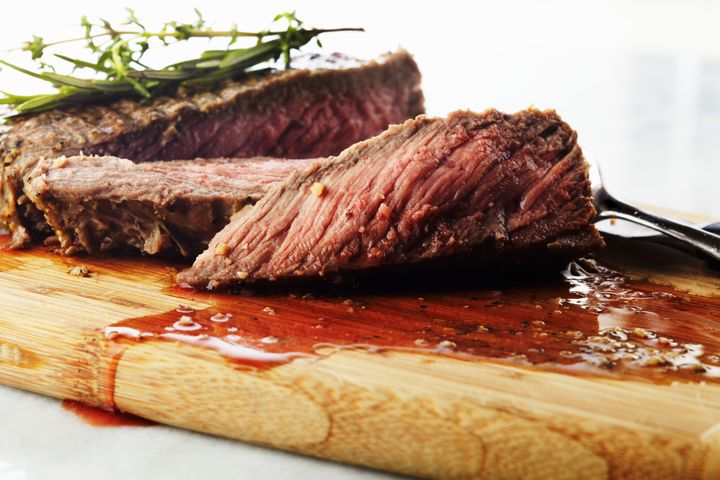
People who love steak take it VERY seriously and the way that they want it to be cooked is a deeply personal decision to them. Some love it ‘well done’ while others love to have it ‘rare’, or, as some say ‘bloody’.
While it’s hard to imagine a bloody food being appealing, a rare steak is often thought to have more flavour, a better texture, and according to some foodies, it’s actually better for you.
However, as hardcore as eating a ‘bloody’ meat sounds, that ‘blood’ that you see on the plate isn’t actually blood. Sorry.
What the red juice from steak actually is
In a recent video, chef and content creator Joshua Weissman said: “It’s not blood! That is myoglobin. Myoglobin is a protein and all it does is transport oxygen to the cells.”
He explained that at the point that we see it, the myoglobin is just mixed with a little bit of water that was already in the protein.
In fact, according to the U.S Department of Agriculture, myoglobin is almost always responsible for the colour of meat: “Myoglobin, a protein, is responsible for the majority of the red colour. Purplish in colour, when it is mixed with oxygen, it becomes oxymyoglobin and produces a bright red colour.
“The meat from older animals will be darker in colour because the myoglobin level increases with age.”
Is red meat good for you?
According to the NHS: “Red meat – such as beef, lamb and pork – is a good source of protein, vitamins and minerals, and can form part of a balanced diet. But eating a lot of red and processed meat increases your risk of bowel (colorectal) cancer.”
The NHS recommends that people who eat more than 90g (cooked weight) of red and processed meat a day cut down to 70g or less to reduce their risk of bowel cancer.